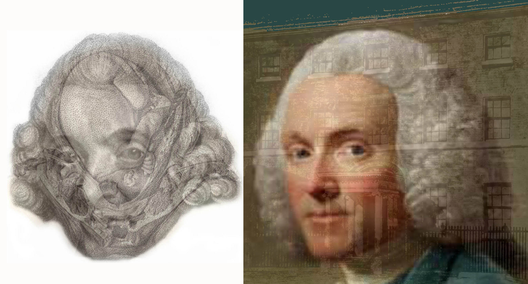William Hunter1718–1783
William was the elder brother of John Hunter. Both were born at Long Calderwood in Lanarkshire, Scotland and both made their names in London. William was trained in divinity at Glasgow University before taking a medical apprenticeship under Cullen in Edinburgh. He moved to London in 1741 and studied under William Smellie (1697-1763), also a Scotch doctor and obstetrician who was trained in Glasgow. Hunter became an obstetrician of renown and was physician to Queen Charlotte. He was also appointed professor of anatomy to the Royal Academy of Arts. In 1768 he built an anatomy theatre in Great Windmill Street, London, where many budding anatomists and surgeons were trained. Anatomy was taught by dissecting human corpses. Despite the difficulty of obtaining suitable specimens, a steady supply was made available to William, who was assisted by his brother. The routes through which the bodies found their ways to the dissecting table were unlikely to have been wholly legal. Hunter was an avid collector, not only of anatomical specimens and books, but also of coins and paintings. Much of his collection is now housed in the Hunterian Museum and Art Gallery at Glasgow University. Hunter employed some of the most skilled anatomical artists to illustrate his books. On the left, William Hunter is shown with the engraving of the gravid uterus made by Jan van Rymsdyk (1730-1790); on the right Hunter is combined with an illustration of the Great Windmill Street school of anatomy.
